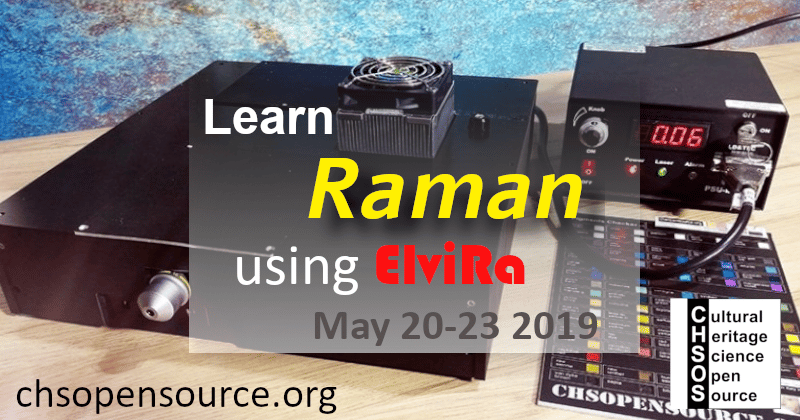
We are now providing a 6 hours Training module on Raman Spectroscopy using our system ElviRa. We start this new module in the next upcoming training program scheduled 20-23 May. Participants will practice Raman Spectroscopy to identify pigments on manuscripts, stamps, prints, and paintings. This module will be provided in all the upcoming training program at the CHSOS Studio in Italy.

ElviRa is our Raman spectrometer. Precise, easy to use, affordable, and packed with accessories for our daily work in technical art examination. This is our best choice for art professionals to start on Raman.

There are different kinds of Raman spectrometers. The main feature is the wavelength of the laser. There are Raman systems working with a laser at 532 nm or 633 nm, 785 nm and 1064 nm. each one of these wavelengths is more suitable for specific tasks. A good Raman lab doesn’t have only one Raman system but 2, 3, maybe 4, with all these lasers. Specifically for art examination, some pigments can be identified with the laser at 532 nm, other with that at 633 nm and so on.

Elvira is part of our family of scientific tools for Art examination.
Bottom line, there is not a Raman system that outperforms all the others. You need more systems. So, we present here, ElviRa, a Raman system, using the 532 nm laser because this is the one that alone is more likely to provide positive pigments identification. This publication illustrates this concept: Pigments Checker version 3.0, a handy set for conservation scientists: A free online Raman spectra database. The pigments in Pigments Checker were analyzed with 3 Raman systems at 532 nm, 633 nm, and 785 nm. The 532 nm Raman resulted to be the one more likely to provide positive identification of the sample. There is a lot more to know about Raman spectroscopy but we thought that a system at 532 nm is the right choice for those art professionals that want to start on Raman spectroscopy for pigments identification.






